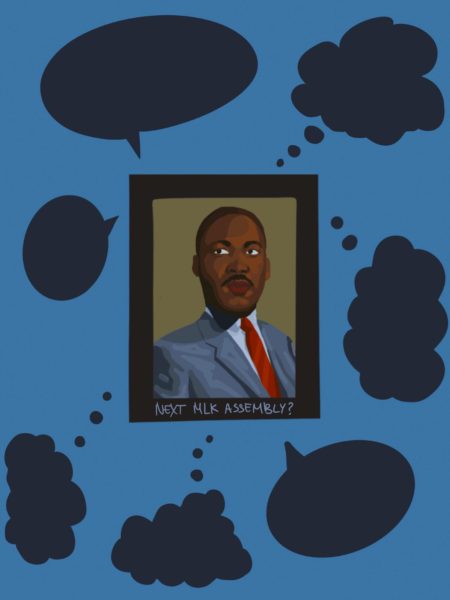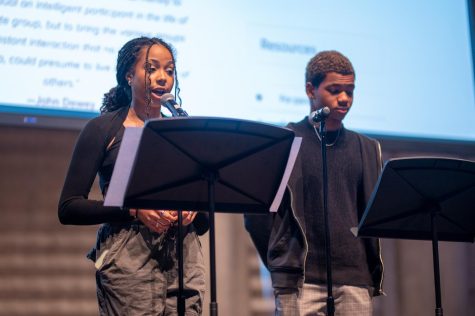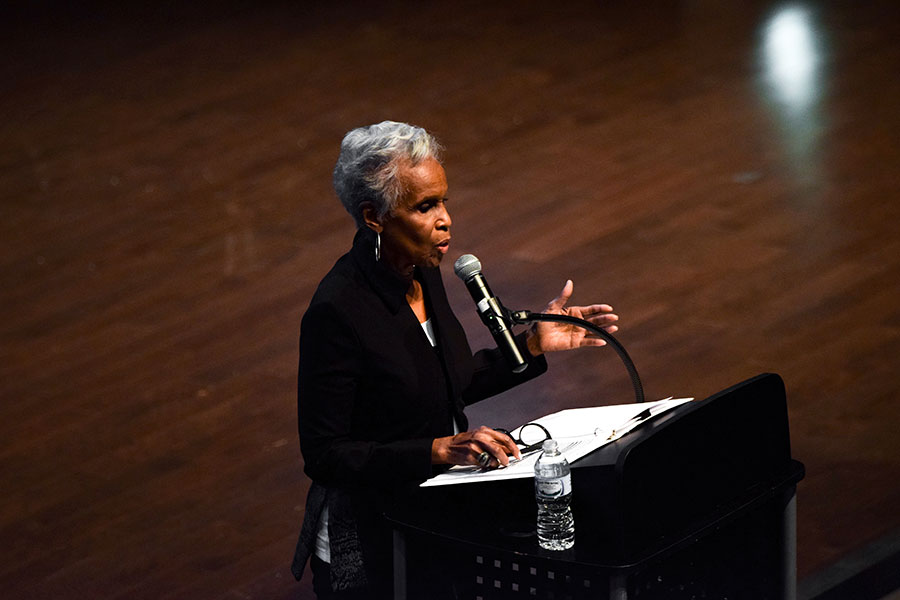Martin Luther King assembly explores “Black is more than a word”
Maria Shaughnessy
First black Washington Post reporter Dorothy Gilliam addresses U-High students at the Martin Luther King Jr. assembly Feb. 16 as the featured speaker. Ms. Gilliam talked about “Black is more than a word,” the theme of the assembly, and the progression of black history accompanied by images in the background.
You could hear a pin drop in the Gordon Parks Assembly Hall as the Black Students’ Association officers read an open letter to the U-High community at the conclusion of the Martin Luther King Jr. Day assembly Jan. 16. The letter delivered a strong call to action for the school to improve its approach to diversity, equity and inclusion.
This year’s assembly followed an incident of racism, where a student shared a meme on social media in mid-December. The BSA letter directly referenced the incident, along with past issues surrounding a culture of racial bias at the school.
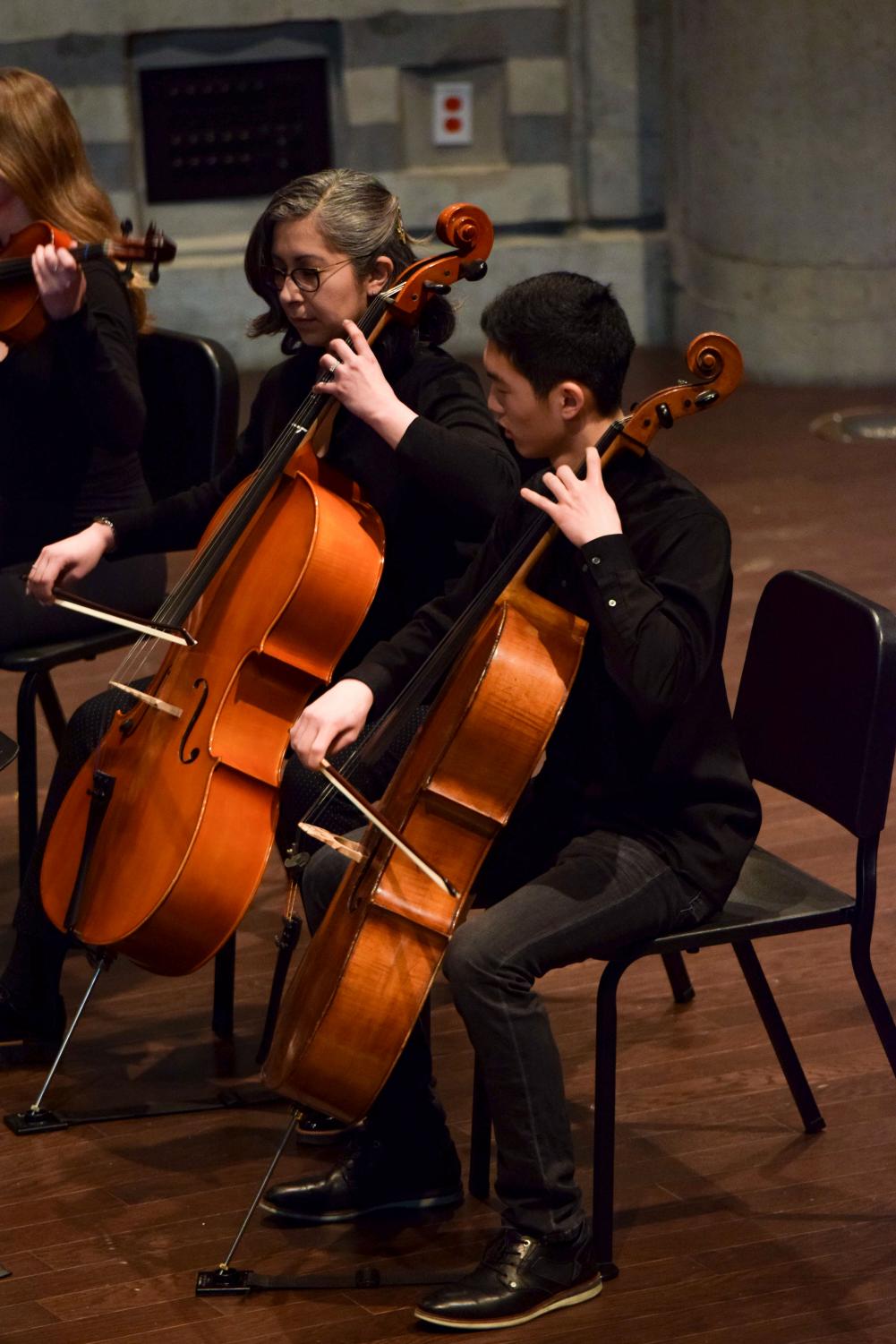
Sophomore Aaron Kim and music teacher Michelle Morales of the Chamber Collective play the cello at the Martin Luther King Jr. assembly Feb. 16. They played “At the Purchaser’s Option” by Rhiannon Giddens. Later in the assembly, the Concert Choir performed “Rise up” with soloists Jasmine Tan and Clare O’Connor.
“We need to actively work against the many problems we’ve had regarding racism,” Lea Runesha, BSA president, said.
With a theme of “Black is more than a word,” the assembly focused on exploring black culture and what it means to be black.
Dorothy Butler Gilliam, the first African-American female journalist at the Washington Post, delivered the keynote speech, where she emphasized that Dr. King provided the world with a blueprint to bring about change.
“Black is about resilience. It is about a knowledge that I must be courageous against the odds,” Ms. Gilliam said, addressing this year’s theme. “It’s about what I felt covering stories at the Washington Post when people would humiliate me, or when I wrote stories that people didn’t like.”
To close her speech, Ms. Gilliam shared a powerful insight with the U-High student body.
“Each of you must define your own strengths, your own culture,” Ms. Gilliam said, “I hope you will always be proud of who you are, but I hope you always use your talents that are not violent, that are not hurtful to others.”
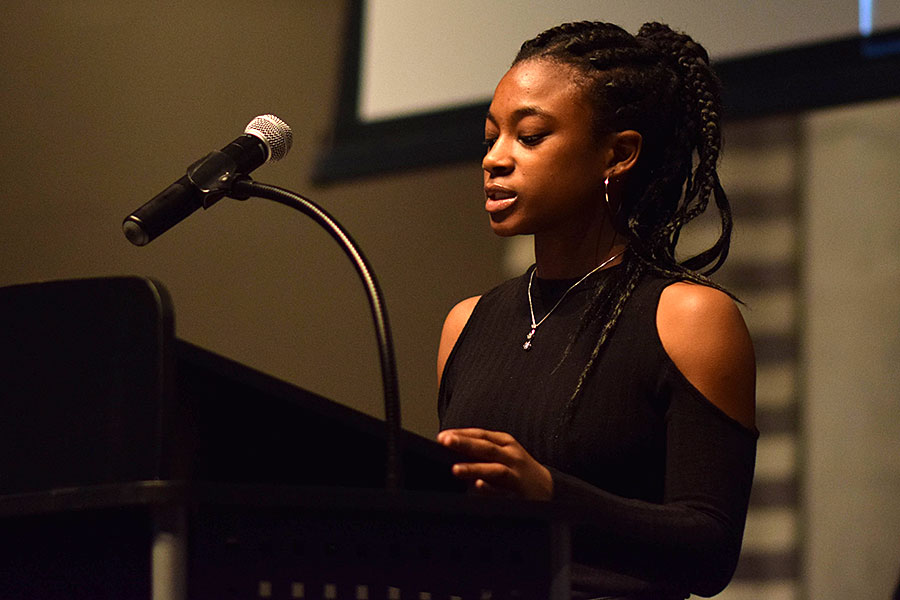
Junior Mikaela Ewing, a member of the Black Students’ Association leadership board, reads aloud part of an open letter to the U-High community at the end of the Martin Luther King assembly Jan. 16.
Sophomore Aaron Kim received the student Spirit of Martin Luther King Jr. Award for engaging in challenging and courageous discussion about race. English teacher Sari Hernandez received the faculty award for encouraging her students to engage in activism.
“63 Boycott,” a film about Chicago school walkouts that started in 1963 to protest the segregation and inequality of resources in Chicago Public Schools, was shown in three parts throughout the assembly. The film exemplified how interracial groups have fought against oppression.




















































